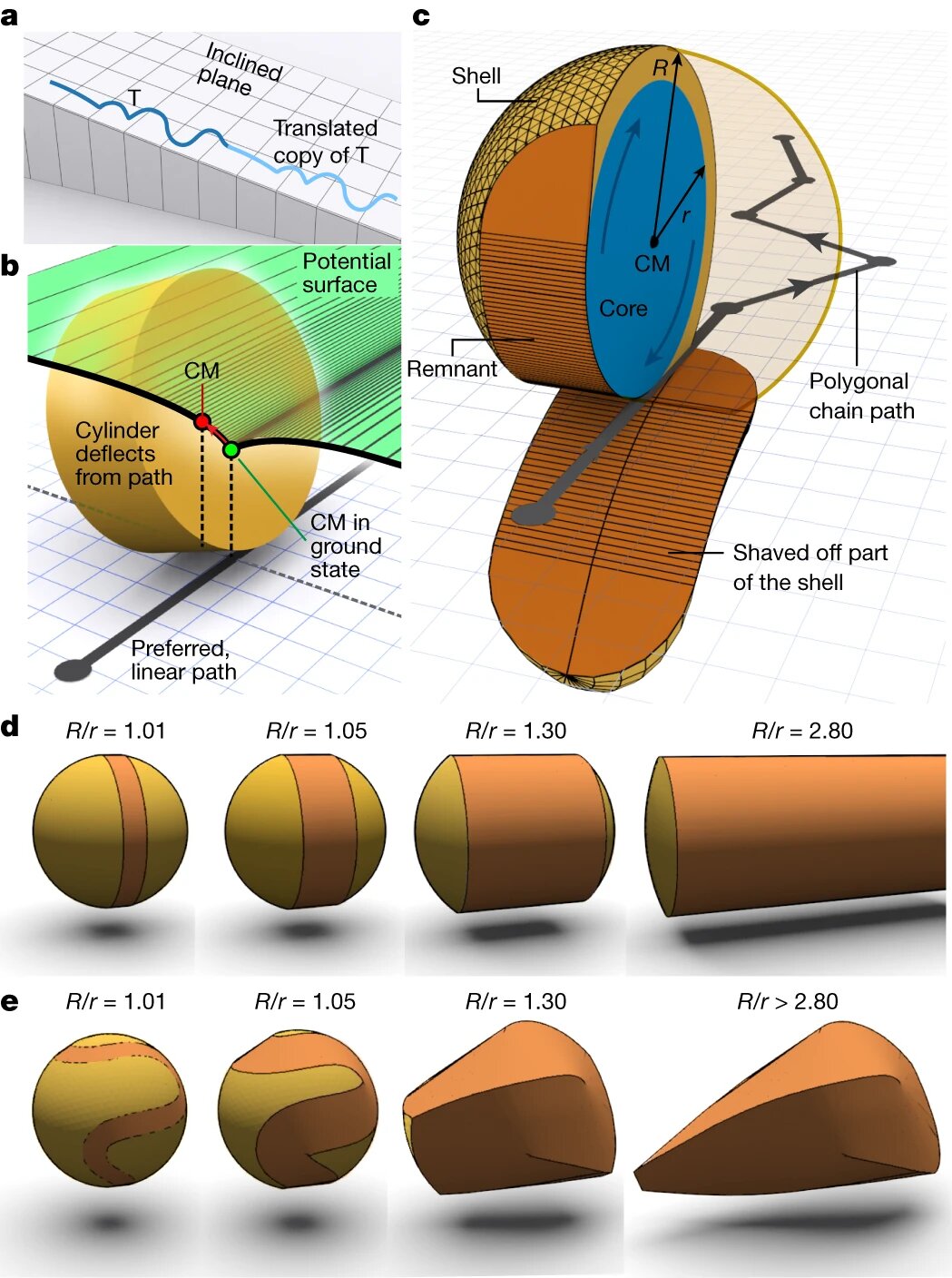Rolling paths and trajectoid shapes are an intriguing area of study for physicists and mathematicians at the Institute for Basic Science’s Center for Soft and Living Matter in South Korea. Collaborating with a colleague from the University of Geneva, they have developed an innovative algorithm that can determine the shape of an object to make it roll down a ramp along a desired path. Their findings are detailed in a paper published in the esteemed journal Nature.
To explain their approach, the researchers envisioned a sphere made of clay rolling down a ramp. They explored the possibility of manipulating the shape of the sphere as it rolled to conform to a specific path. If these deformities were maintained and the sphere rolled down the ramp again, it would naturally follow the predetermined path. The team realized that the number of potential paths was vast due to the countless deformations that could be created.
This led the researchers to question whether these deformations and paths could be mathematically correlated. If so, they wondered if these mathematical relationships could be used to develop an algorithm for 3D printing objects with deformations that would compel them to follow desired paths. Their investigation yielded positive results, confirming that both questions could be answered affirmatively.
Using principles from math and physics, the team formulated equations that described the deformations necessary for an object to follow a predetermined path down an inclined plane. They then created a computer program capable of producing such objects using 3D printing technology. These specially shaped objects were termed trajectoids and contained a solid metal ball-bearing for added weight. Moreover, the team discovered that they could design trajectoids capable of traversing a given path twice, dubbing them “two-period trajectoids.”
The researchers propose that their formulas and algorithm have potential applications in robotics and various areas of physics research. These areas include the study of electron angular momentum and quantum research investigating the evolution of a quantum bit.
In summary, the research team’s groundbreaking work has resulted in an algorithm that enables the creation of objects with specific deformations. When rolled down ramps, these objects follow predetermined paths. Their findings open up possibilities for advancements in fields such as robotics, electron angular momentum research, and quantum studies.
Denial of responsibility! TechCodex is an automatic aggregator of the all world’s media. In each content, the hyperlink to the primary source is specified. All trademarks belong to their rightful owners, and all materials to their authors. For any complaint, please reach us at – [email protected]. We will take necessary action within 24 hours.

Jessica Irvine is a tech enthusiast specializing in gadgets. From smart home devices to cutting-edge electronics, Jessica explores the world of consumer tech, offering readers comprehensive reviews, hands-on experiences, and expert insights into the coolest and most innovative gadgets on the market.


